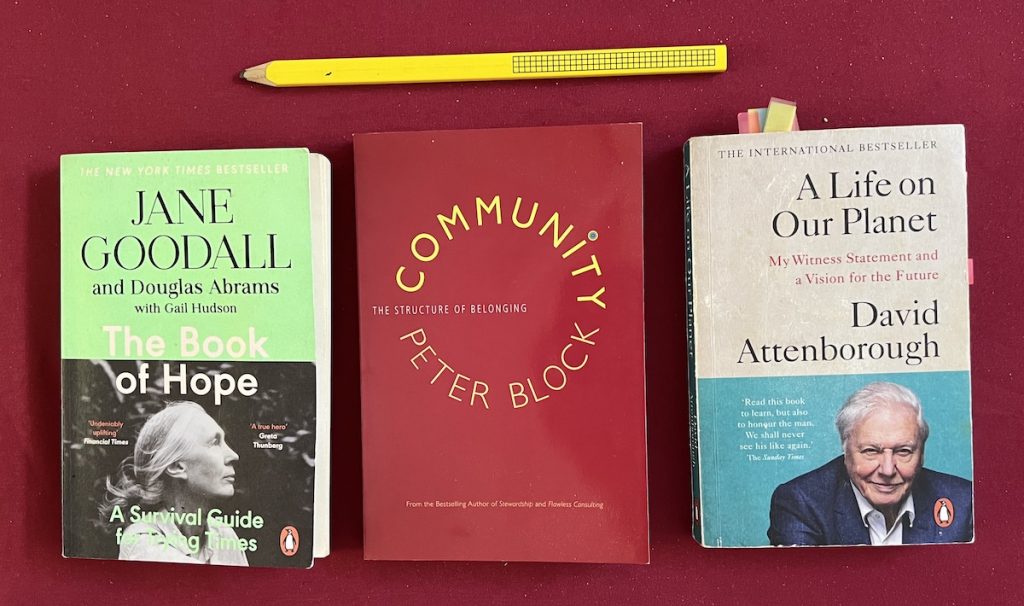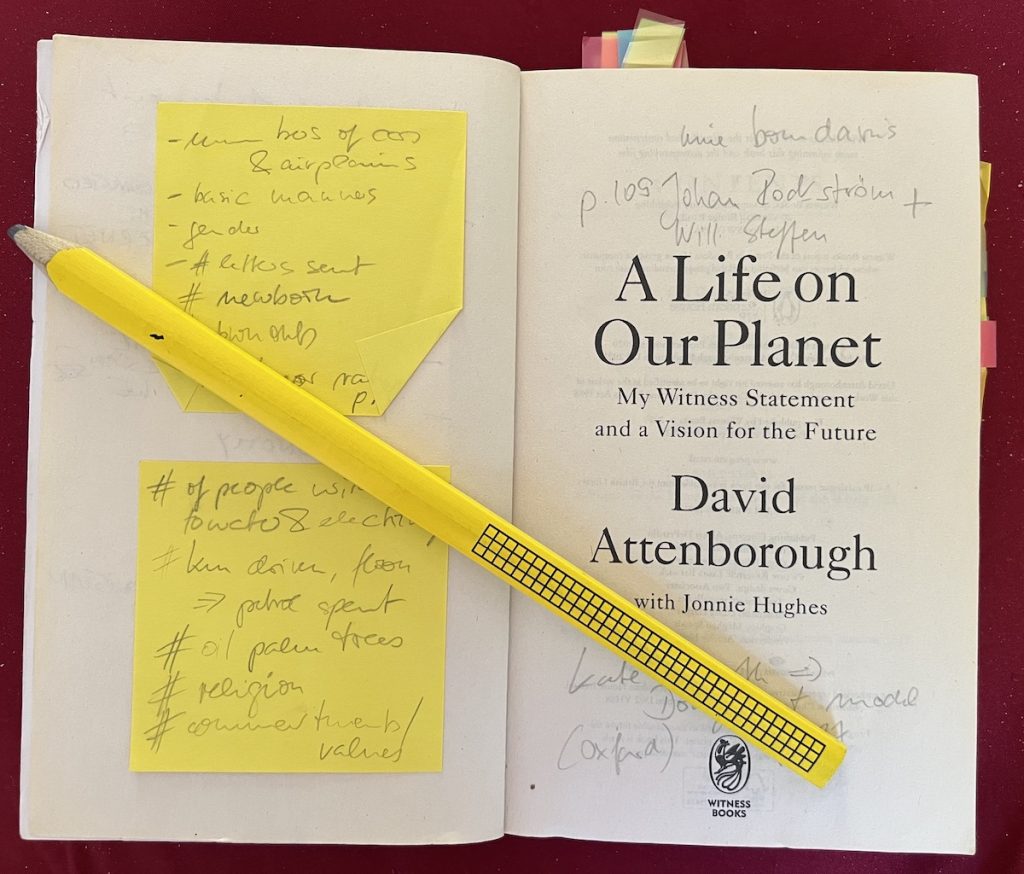
The Nomad is a series of stories, fascinations, encounters, observations, experiences, joy of the moments by me, Ulrike Reinhard – all around my travels. Stay tuned!
Ulrike Reinhard is The Nomad 🙂
… I just can’t adjust to screen reading and I do prefer reading to listening, so audiobooks are also no alternative for me. Therefore I end up carrying books around the world. When I arrived in the US a few weeks ago I had 16 (!) books in my suitcase. Heavy. Crazy. But that’s just the way it is.
After I’ve read a book, it really looks like having been used 🙂 I underline important thoughts, I write remarks and add notes … sometimes I even take photos of certain passages and keep them in a folder. And I always read two or three books parallel.
Today I want to share my thoughts of the following three books. They all reflect on the relationship of a single person (in this case ME) to the greater environment it is living in (the WE). And to go one step further WHAT the single person CAN CONTRIBUTE to the WE it is living in. And WHY this contribution matters.

For each of this three books I want to make a few remarks – what I drew out of them and what inspired me.
Jane Goodall: The Book of Hope
- resilience is the key for any longterm endevour
- if you feel a thing should be done, do it! Don’t think about what might not work, learn as you go!
- every single person can do and drive change! Don’t let a mountain of unanswered questions stand in your way. Go step by step, but go!
- The Harmony of Natural Law (quote by Einstein) >>> she believes there is a greater intelligence out there which is somehow guiding her (and others)
- We, the humans, are a part of nature. Just like the Chimps are or the plants.
- beautiful examples from all over the world which provide hope, I especially remenber this one: The blind man and his armless friend plant a forest in China
- Her main reasons for her hope are: the amazing intellect of humans, the resilience of nature and the energy and the commitment of the youth
Peter Block: Community – The Structure of Belonging
I found this book in the library of Synergia Ranch and it helped me a lot to structure my book “Be a Voice, not an Echo!” which I am writing currently. So I will focus mainly of the structure which for Block’s means: ” … to build, to construct, to form as well as the organization or morphology of the elements involved in the process. It can be seen as the embodiment of creation … a quest not only for form but also for purpose, direction and continuity. “
Here you find a good review of Peter Block’s book.
And here are the things I really liked about this book:
- a very clear note at th ebeginning for whom it would be a waste of time to read the book
- a summary of each chapter at its beginning
- to create an advise-free-zone
- the importance/power of asking PRECISE questions
- the main points of each chapter are summarized in outline format at the end
- the inclusion of role models and resources in a form of an extended glossary
David Attenborough: A Life on our Planet
That was the first book I’ve read by David Attenborough, I’ve seen some documentaries and interviews. I found it a marvellous book, written for EVERYONE in clear and simple language while addressing severe and complex problems.
In the first chapter he is writing about the most significant milestones in his life. At the start of each lifetime event he shows the destruction of our planet by simply stating three numbers:
- world population
- Carbon in atmosphere
- remaining wilderness
In the second chapter he provides a vision for the future and lays out how we all can still succeed in saving our planet if we all start to act now. I worked hard on this book …

… and dug deeper in two concepts which are – in his eyes – part of the solution for saving the planet. To find these two concepts is reason enough to read this book.
- The Nine Boundaries of our Planetary System by Johan Rockstrom et al. “Planetary boundaries are a framework to describe limits to the impacts of human activities on planet Earth. Beyond these limits, the environment may not be able to self-regulate anymore. This would mean the Earth system would leave the period of stability, in which human society developed. Crossing a planetary boundary comes at the risk of abrupt environmental change. The framework is based on scientific evidence that human actions, especially those of industrialized societies since the Industrial Revolution, have become the main driver of global environmental change. According to the framework, transgressing one or more planetary boundaries may be deleterious or even catastrophic due to the risk of crossing thresholds that will trigger non-linear, abrupt environmental change within continental-scale to planetary-scale systems.”
- The Doughnut Model by Kate Raworth; it is based on Rockstrom’s et al boundaries. The Doughnut (2017) is about: “Humanity’s 21st century challenge is to meet the needs of all within the means of the planet. In other words, to ensure that no one falls short on life’s essentials (from food and housing to healthcare and political voice), while ensuring that collectively we do not overshoot our pressure on Earth’s life-supporting systems, on which we fundamentally depend – such as a stable climate, fertile soils, and a protective ozone layer. The Doughnut of social and planetary boundaries is a playfully serious approach to framing that challenge, and it acts as a compass for human progress this century.”